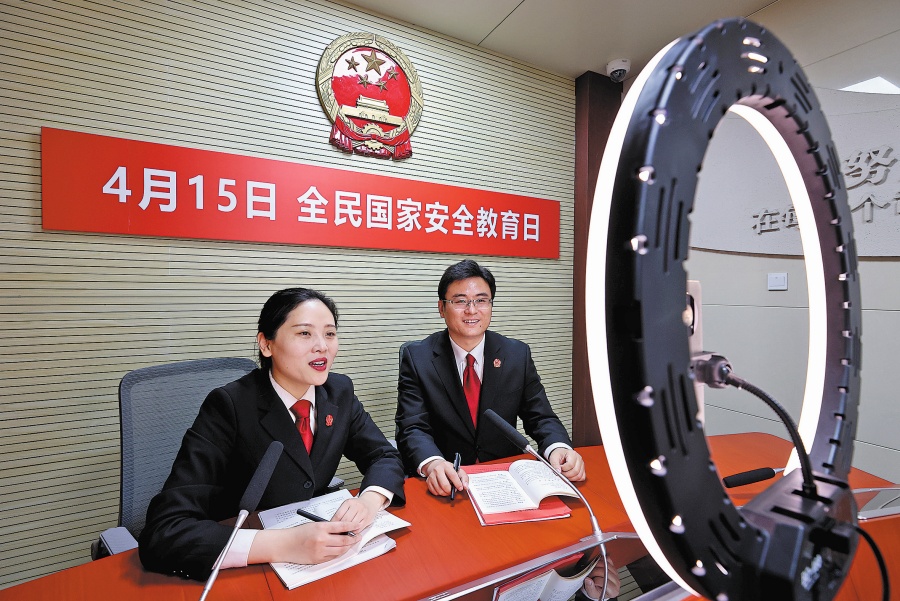Digital advances herald judicial progress
Rapid socioeconomic development and technological innovation lead to more efficient legal system


Counting pigs
With socioeconomic development and the pace of judicial standardization increasing, the courts where the two retired judges used to work have become large high-rise blocks, with clearly divided trial and work areas.
Judges must wear robes during case hearings, and the design of courtrooms as well as the placement of chairs and benches is followed to a unified standard.
More than 3,500 courts nationwide have embraced the internet and digital technologies. At Beijing Internet Court, for example, all legal procedures, including case filing, case hearing, evidence exchange and ruling delivery, can be done online.
Litigants and lawyers are allowed to attend trials via video link, "which can help save time and travel expenses, meaning residents can deal with their cases at any time and any place, such as in a car or a meeting room", said Yan Jun, a judge from the court.
"Previously, I had to find the documents I wanted from lots of paper materials piled up like mountains in my office, but since 2018 when I came to work at the court, I have turned to an internal intelligent system where a database can give me the accurate information," she said.


















